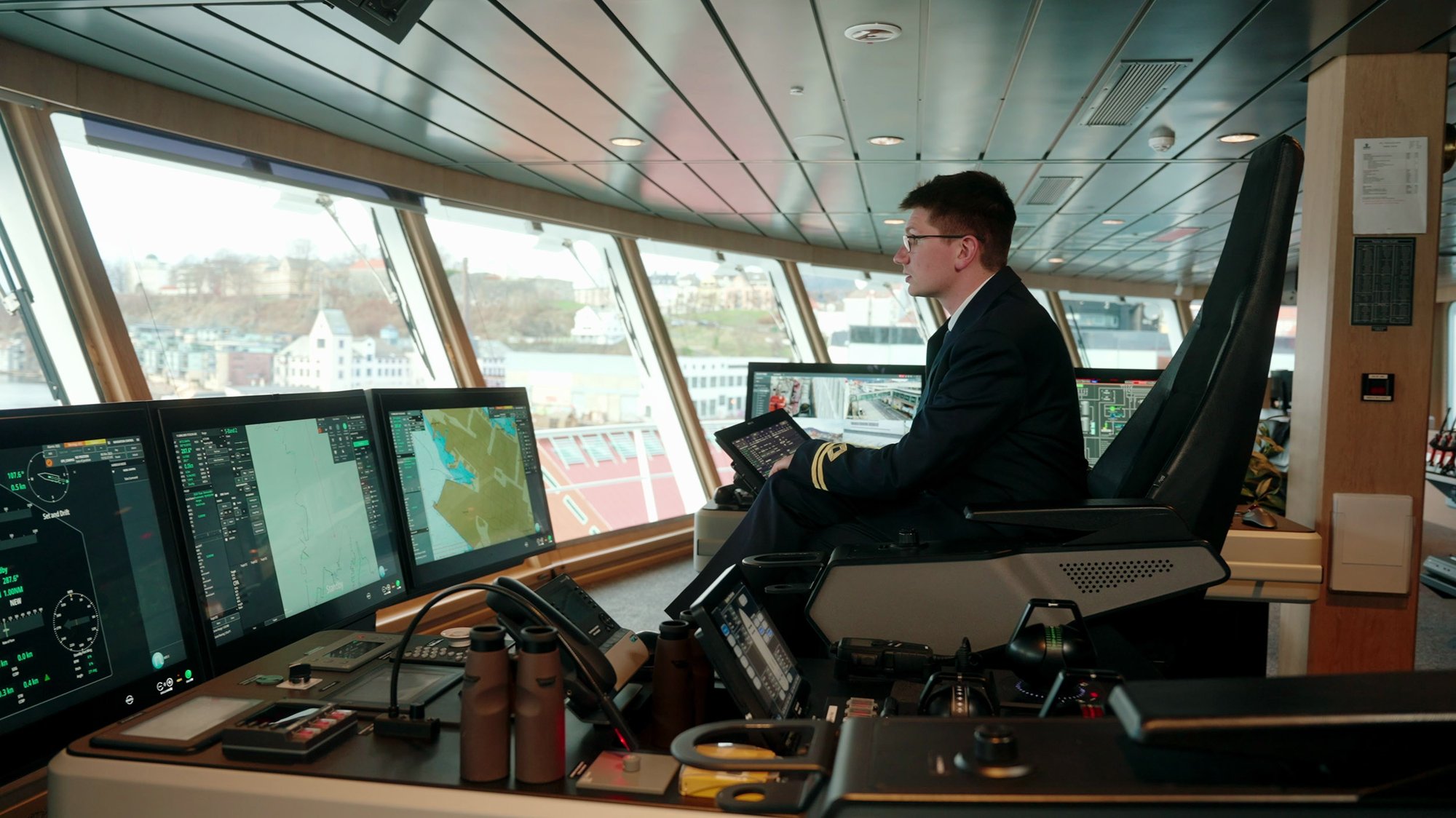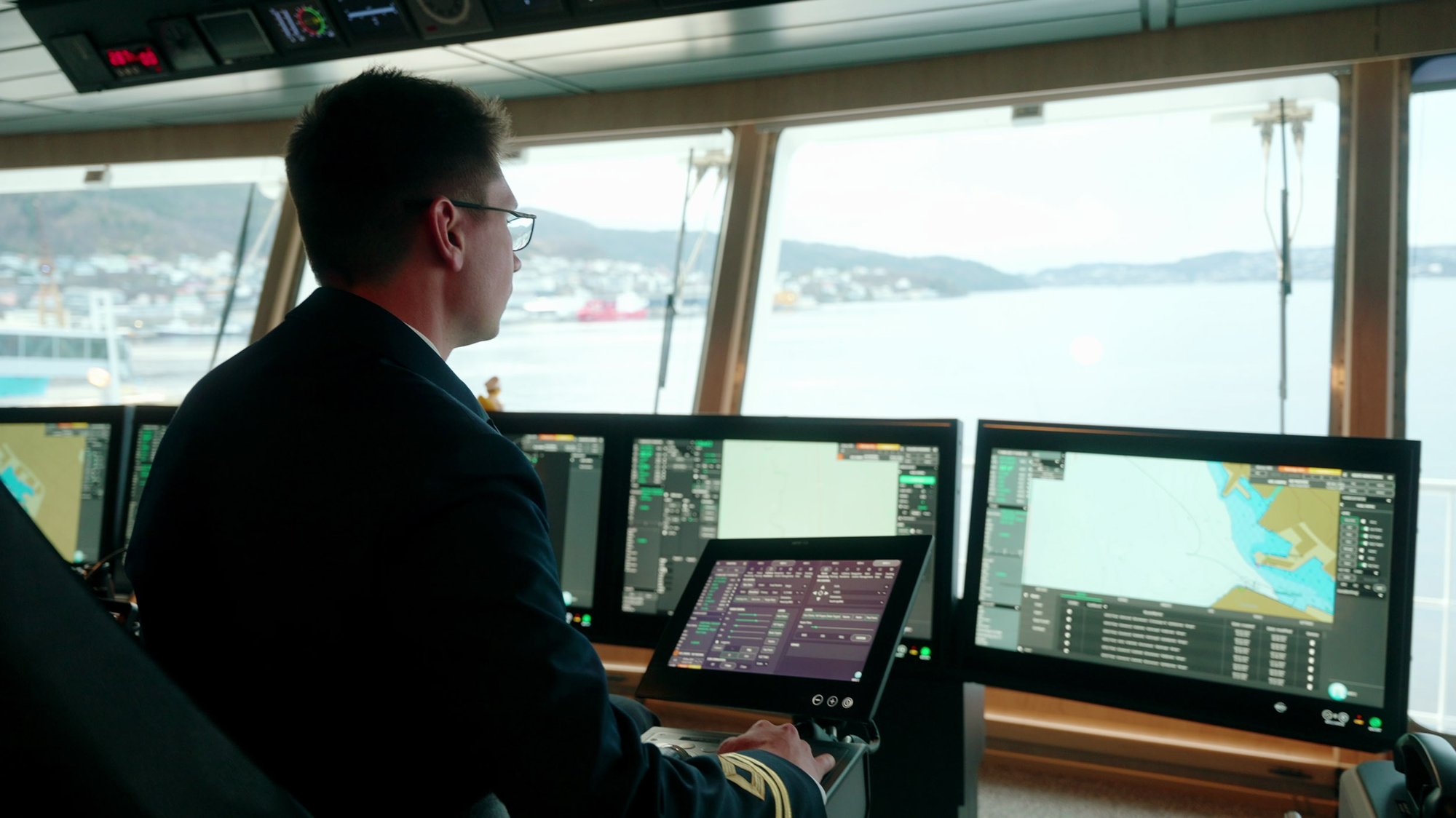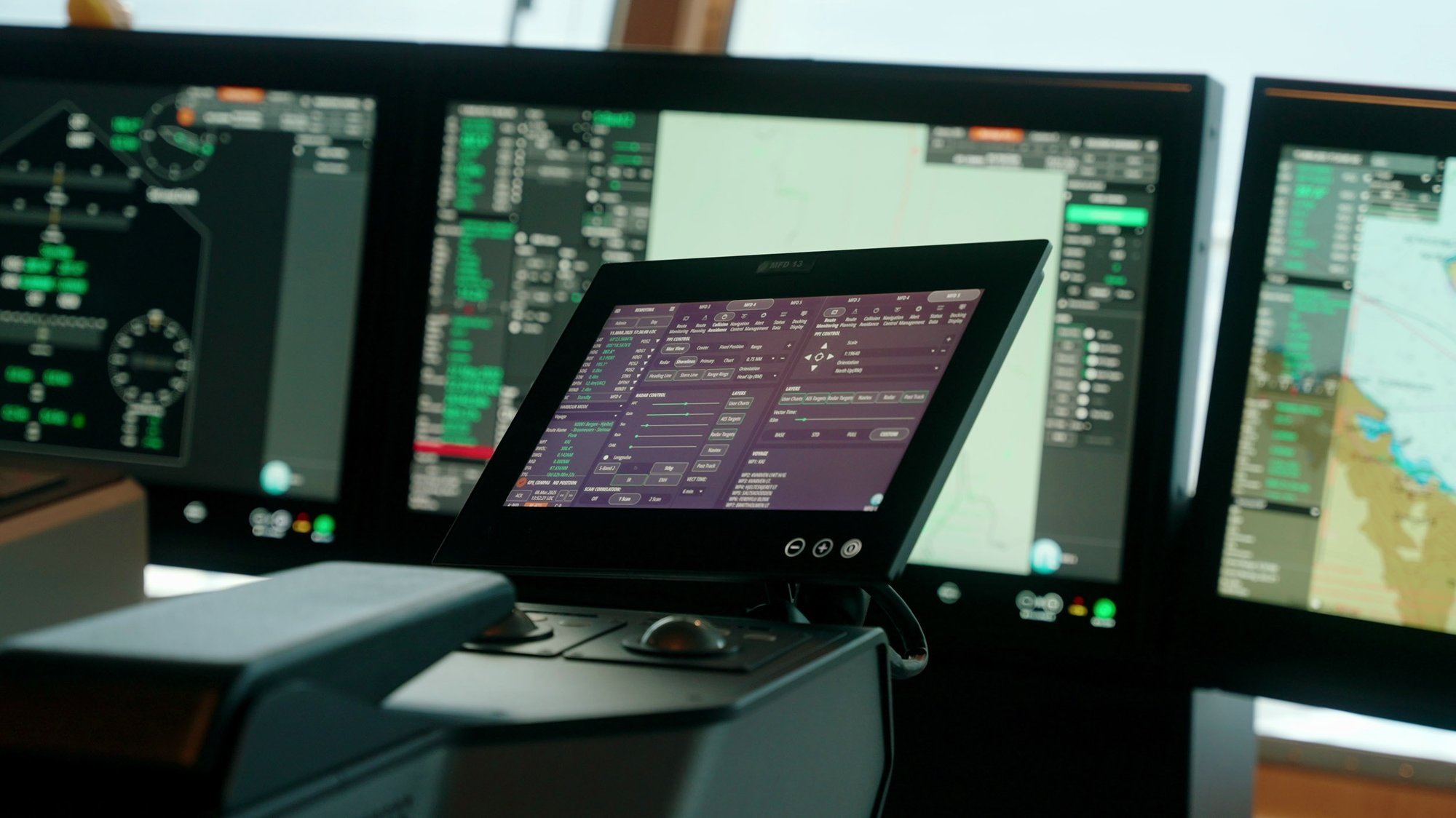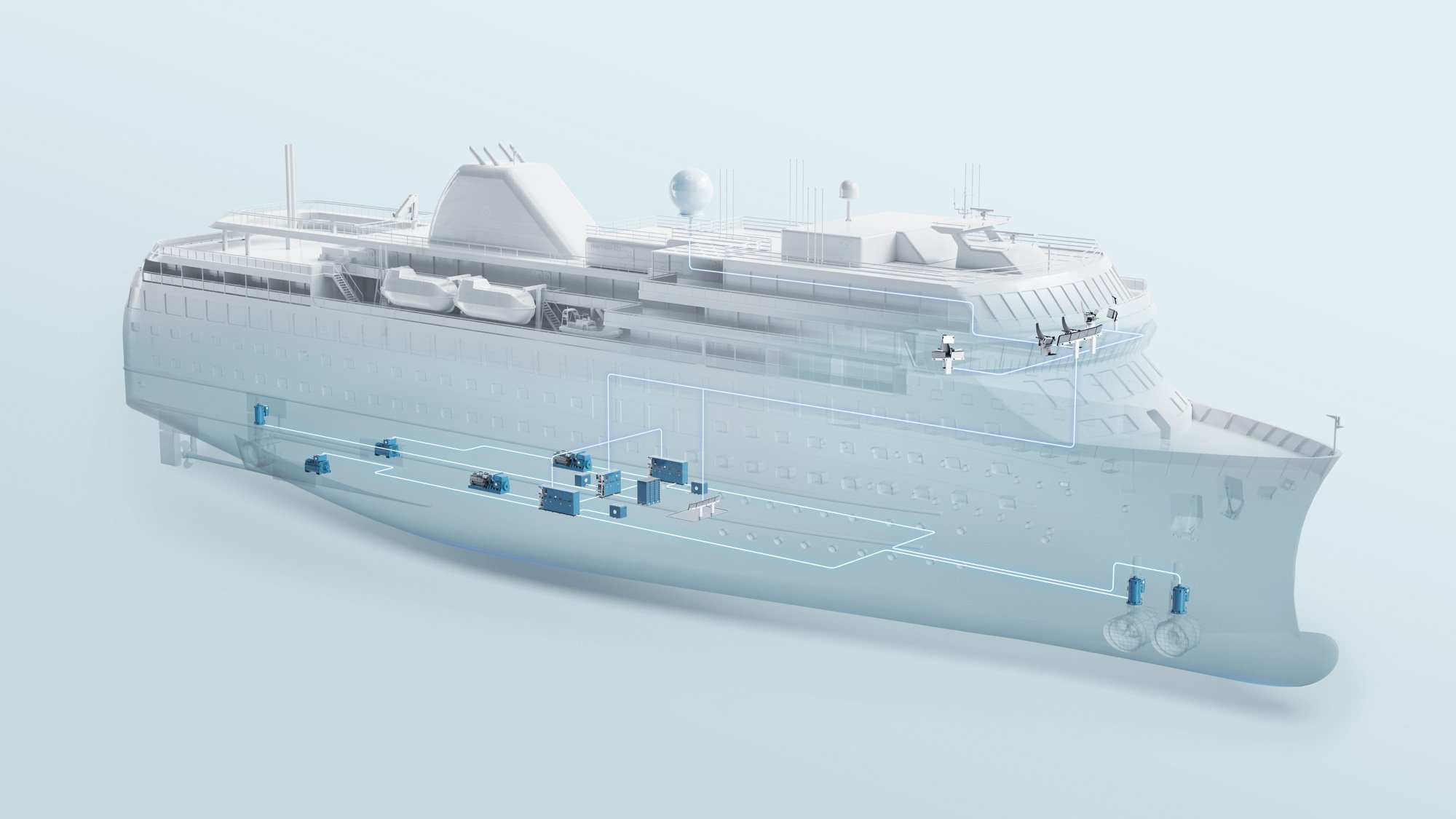A Clearer View of the CoastA Clearer View of the Coast
When you are sailing Norway’s coastal route between Bergen and Kirkenes, routine is everything. The timetable from Bergen to Kirkenes leaves little room for friction. That's where the Raven INS comes in.
The 11-day round trip leaves behind 34 ports, shifting weather, narrow fjords, tight approaches, and steady departures. On the bridge of Havila Polaris, routine is built on clarity.
What you need, where you need it, when you need it. That is the promise of Raven INS, the integrated navigation platform at the heart of Havila’s modern coastal operation.
“The Raven INS is a crucial part of my work day,” says Eirik Storsjøen-Bjerke.
He is the navigation officer on Havila Polaris, one of four sister vessels sailing this route.
“As an integrated system, Raven gives me much more room to manoeuvre compared with stand-alone systems.”

And by 'room' he means mental space, with fewer steps to get the right picture, and less movement around the bridge when decisions can’t wait.
The coastal route between Bergen and Kirkenes is as much logistics as it is scenery. Freight and mail meet tourists and locals on a schedule that repeats, day after day, in all seasons.
You approach, you dock, you depart. The tasks must be done safely, predictably, and with as little cognitive noise as possible.
From separate systems to seamless integration
Traditional bridge setups rely on standalone systems. Radar, ECDIS, autopilot and conning displays are often delivered by different suppliers, each with their own screens, controls and logic.
“Bridge systems have evolved a lot over the years. On older ships, consoles were huge, buttons were bigger, and the footprint was larger, Erik says.
In setups like these, systems don’t always communicate well with each other. You can’t switch seamlessly between views, and you often need to physically move between stations to get the full picture. That adds complexity for a navigator juggling time.
One of the bigger changes in recent years is integration, which brings everything together on a unified platform.

Instead of treating each task as a separate island, Raven INS connects everything.
It’s a single platform, the same system, the same interface, on every screen. Radar, charts, alerts, system status, route planning, it’s all there. It speaks the same language and looks the same.
“I can access all the information I need from any screen, whether I’m on the bridge wing or at the centre. I can switch between charts, radar and key systems without having to move." Eirik says.
This reduces both physical movement and cognitive noise. Instead of moving from screen to screen, the navigator stays focused on his task, especially when time is short and conditions are changing.
“This system is compressed down to what we need in any situation. The fewer buttons I have to press to make a quick decision, the easier and safer it is to navigate», Eirik says.
And Raven INS is designed to keep your eyes, hands and mind exactly where they should be: on the task at hand.

Trusting the tech
No system is more critical than the one you rely on when things go wrong. On the bridge, trust is built on repetition, and tested in failure.
For a navigator, that means having reliable data, no matter where you are or what has just happened. Raven INS is built with full redundancy across all workstations. Every screen runs the same software independently and shares the same data. If one station fails, another takes over instantly.
“I need the system to give me correct information quickly. I must be able to trust what I see,” says Eirik.
“That’s why redundancy is one of the most important things. With an integrated bridge like this, we can be in different places and still have access to the same information.”
Compared to traditional setups, where data and functionality are often tied to specific consoles, this gives a new level of operational redundancy. Alarms, charts, and route plans are synchronised across the network. Safety parameters are the same. There’s no guessing, no switching modes, no extra delay.
Holistic perspective on energy efficiency
Energy efficiency is an essential aspect of Havila Voyages’ operations.
Waste heat from engines is reused to heat water and cabins. Hotel systems are optimised to consume as little power as possible.
Even the kitchens are designed to minimise food waste, reducing the environmental footprint across the entire journey.
But what matters most is how the ship moves.
“We run on both LNG and batteries. We operate in hybrid mode, reducing emissions along the coast. We even have the ability to sail into port on battery only, no gas, no noise. Just clean power.", he says.

Havila Polaris is at the quay in Bergen when we speak to Eirik, getting ready to sail north.
“We’re about to start a new voyage. We’ve welcomed many new and excited passengers from all around the world. We’re looking forward to giving them a fantastic experience — and a safe one.”
Havila Polaris is the third in a fleet of four sister ships operated by Havila Kystruten. The company has been in operation since 2020, sailing daily between Bergen and Kirkenes.
“We have a societal mission. To transport cargo and passengers between 34 ports along the Norwegian coast. We have four vessels in operation now, and we’ve had full coverage throughout the year.
The vessels are built for this exact route. From hull design to propulsion, they’re tailored for life along the Norwegian coast.
“What sets Havila apart is the technology and the design. These ships are specifically designed for this type of route. We have a fantastic hull that gives us great stability at sea.” says Eirik.